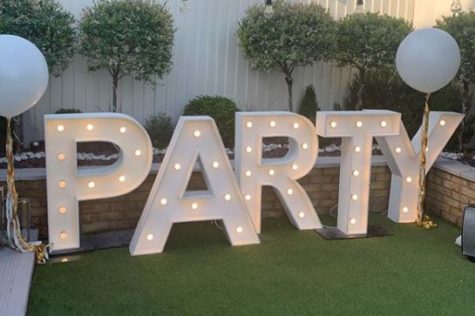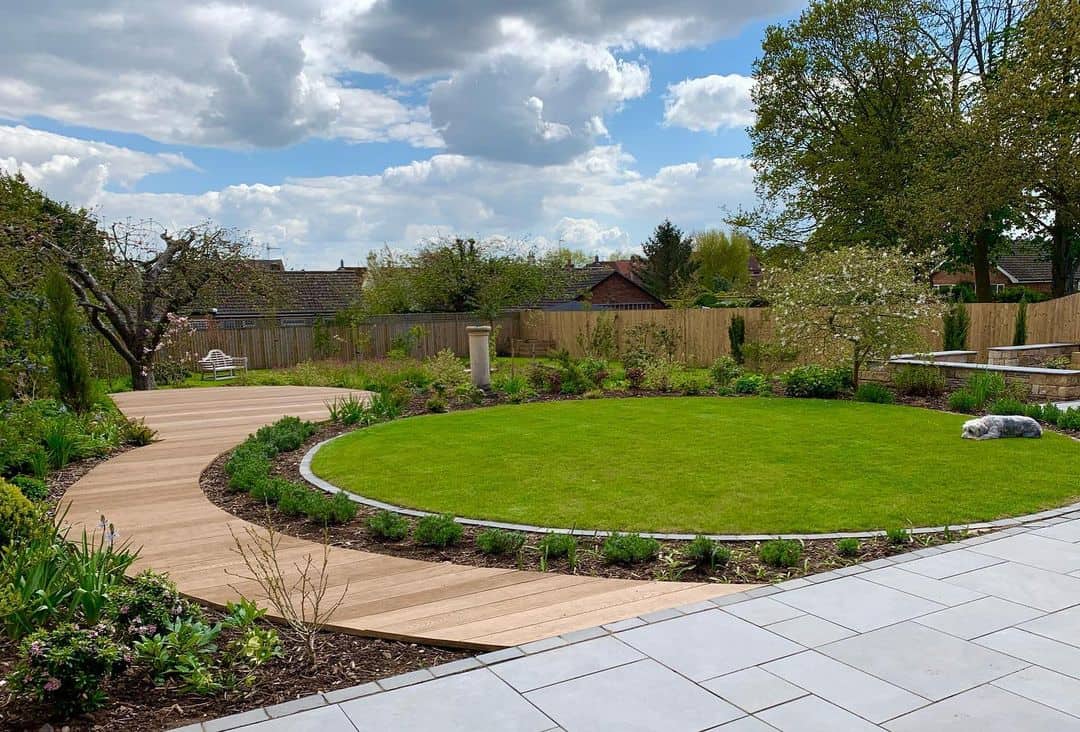Any outdoor area can be transformed into a sensory garden, filled with fragrant plants, tactile surfaces and gentle ambient sounds. If you’re planning to build an engaging space to tantalise the senses, our sensory garden ideas can help.
What is a sensory garden?
A sensory garden uses specific combinations of colour, scent, texture, sound and even taste to engage and delight in ways that a traditional garden might not. Although they’re usually enjoyable for anyone that walks through them, sensory gardens can be especially educational for children, and are often designed to help people or animals with special needs. Sensory garden ideas usually include features that can provide therapy for dementia, autism and sensory impairments (among other things).
Sensory Garden Ideas
Sensory gardens typically include lots of features that can appeal to all kinds of people, with interactive elements intended to be used in different ways. The “purpose” of your sound garden is entirely up to you – it could be designed to be therapeutic or educational, or it could simply be a pleasant, tranquil space to relax in.
1. Accessibility
It’s pretty important that whoever your sensory garden is intended to benefit can easily interact with it. For example, if it’s for people with impaired movement, plan for smooth, unobstructed paths and resting spots – with room for two, if someone else might be guiding them.
2. Child-friendly design
There are several things to think about when designing a garden for children. One thing to remember is that their range of vision and reach will be much closer to the ground. You’ll also factor in supervision – where can an adult stand (or sit) to have the best view of the garden, and are there any blind spots where children could hide?
3. Edible plants

Normally we try and discourage kids and pets from just chowing down on random things they discover with a garden, so it can feel a little unnatural to introduce actual, safe-to-consume vegetation.
It might be easiest to start with edible plants you’re comfortable with – like the kinds you might find in a herb garden or vegetable garden. Herbs like mint and rosemary are right at home in a sensory garden, and you can add tomatoes, strawberries and peas for delicious treats that can be eaten straight from the plant once they’re ripe.
Edible flowers include pansies, hibiscus and nasturtiums. To save confusion, it’s still best to keep all of the sensory garden ideas pertaining to “taste” to one, clearly defined area.
4. Touchable sculptures
Your sensory garden ideas don’t have to include sculpture, but if you do choose to include outdoor artwork, choose something that can be safely interacted with. Sculptures with inviting surfaces work well, or you could look for something that moves or makes noise in the wind.
5. Water features
Water brings so much to a sensory garden. It’s pleasing and calming to look at, delightful and cool to the touch, and can create soothing ambient noise with the right fountain or pump setup. Take a look at the different styles of water features you might enjoy.
6. Play with levels
When it comes to sensory garden ideas, it’s not just about the plants themselves, it’s the appealing and interesting way they’re arranged. Even if you only have a small area to work with, combine plants that grow in different ways – plants that hang, trail and climb, as well as creeping ground cover and plants that grow impressively tall.
It’s also fun to play with proportion, especially for children. Mix miniature varieties with oversized plants and enjoy their amazement.
Pampas grass has a wonderful texture and cheerful sunflowers can easily reach over 6ft tall. Shasta and star jasmine can look like giant daisies, while the tiny flowers of lavender and forget-me-nots look like they could be from a fairy garden.
6. Tactile surfaces
Running your hands over a textured surface is a simple but wonderful way to enjoy the sensation of touch. In your sensory garden, try to combine materials, fabrics and finishes so that there’s always something enjoyable to feel on your skin.
7. Bursts of colour
Lots of sensory garden ideas revolve around colour, and finding different ways to incorporate it within the landscape. There are two aspects to balance when you’re planning your colour scheme: vivid, energising colours, and softer, relaxing shades. Plan your garden in sections and consider which spaces will be stimulating, and which ones you want to be restful.
Plants are the obvious place to start, both for year-round colour and seasonal variation. Choose the right blooms and, in summer, you’ll have the added benefit of butterflies, bees and birds.
Your furniture can play a fun part in bringing colour to your garden, and rugs, blankets and cushions can offer soft, pleasing textures.
8. Creative hardscaping
Hardscaping is a source of colour and texture too! Wood, stone, bricks and paving all have their own distinct look and feel, and can balance the hues of your furniture and flower beds. Fencing, garden structures, garden edging and planters all contribute to the overall scene.
9. Scented gardens
As you might imagine, scented gardens are sensory gardens that specialise in beautiful and interesting fragrances. Garden aromas can be overwhelming though, so designate “neutral” areas as well as fragranced ones.
With some flowers, they simply need to bloom for you to be able to smell their perfume – like roses, jasmine or honeysuckle. Others will need to be brushed up against, or gently crushed between fingers (most herbs, lavender, geraniums). Balance the intensity of aromas across your garden.
10. Sound gardens

via freshome.com
It should be no surprise that sound gardens are primarily aimed at providing different audio experiences and soundscapes. Sound gardens can combine natural sounds, enhanced noises and equipment that can be used to produce sound.
Natural sounds might include flowing water, from a fountain or pump. You might also want to encourage wildlife to hear a variety of birdsong and insects. Natural sounds can also come from plants and foliage, like leafy trees and long grasses.
The environment you build can enhance natural noises. For example, chimes and decorations that make gentle sounds in the wind, or tactile flooring that makes rhythmic noises underfoot or beneath wheels.
Where can I visit sensory gardens in the UK?

The Japanese sensory garden in Holland Park. Photo taken by Ewan Munro, via atlasobscura.com
To get an idea of how a sensory garden can be laid out, it might be helpful to visit one. There are quite a lot of sensory gardens open to the public around the UK, if you know where to look – they’re usually tied into larger parks or more well-known garden estates.
If you just try searching for “sensory gardens near me” you might be surprised by how close your nearest one is! This thoughtful website has an excellent list, but my personal favourites are:
St. Ann’s Well Gardens, Hove
This is exactly what I mean when I say that your nearest sensory garden might be just around the corner! St. Ann’s Well Gardens is actually pretty close to where I live, and I know it as a nice park with lots of dog walkers, a decent café and some sports facilities. I didn’t even realise that they have a small scented garden!
Abbey Gardens, Bury St. Edmunds
Another garden I’m a little bit biased about, as I used to work nearby! The Abbey Gardens are a small park in the middle of the town, with incredible ruins to look at, lots of picnic benches, a gentle river and a play area. The sensory garden is a relatively small area, but is beautifully kept.
Kyoto Gardens, Holland Park, London
If you’ve already read our post on Japanese garden ideas, you’ll understand exactly why I love the Kyoto Gardens. The landscaping is an absolute treat for the senses, and has all of the stunning features you could expect to see in the actual gardens of Kyoto!
Sensory gardens for animals
Sometimes called “enrichment gardens”, sensory gardens can play an important part in keeping animals mentally and physically stimulated. They’re often used for pets (especially dogs) to help them feel calmer and burn off some energy on a daily basis. If you’re looking for dog-friendly garden ideas to help keep your pup entertained at home, starting with some sensory garden ideas might help.
Just like sensory gardens for humans, an enrichment garden for dogs should try and tune in to all of their senses. For example, fountains or gentle windchimes can get their ears ticking.
Build a platform or window that gives them a new viewpoint, and add steps and obstacles for them to climb through. Like people, pets can enjoy walking and playing on different textures. Try sand, bark, grass, wood, stone and mulch (just avoid gravel, which can get lodged in paws).
Grow plants that look, feel and smell interesting (just make sure they’re safe for dogs first). Herbs and fruits are a good choice, as most of them are okay for dogs to sniff, eat and brush past. You could also try bringing home leaves or branches from walks elsewhere, giving your pooch new smells to enjoy.
When choosing what to include, consider how your dog normally interacts with their environment. If they usually make a beeline for water, think about including a pool or water feature for them. For dogs that like sniffing out crevices and undergrowth, try to build them tunnels and hidden areas to sneak around.
The sensory garden doesn’t need to be especially large – even a small sensory area on a balcony or terrace will bring your dog some joy. Remember to pay attention to the features that your dog seems to really enjoy, and make a note of anything that gets ignored!
Enjoy the process of cultivating a sensory garden
When you’re trying to plan something as magical and curated as a sensory garden, there can be a lot of pressure to get it right. Remember, the inspiration behind all of these sensory garden ideas is to create a place that’s nice to be in – you shouldn’t be stressed about it!
Take your time, start simple and enjoy developing your sensory garden into a space of delight.

Save this pin for later
















